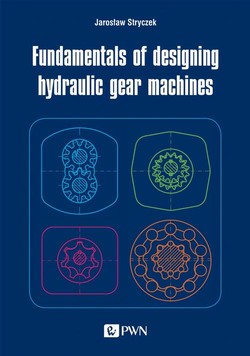Читать книгу Fundamentals of designing hydraulic gear machines - Jarosław Stryczek - Страница 13
На сайте Литреса книга снята с продажи.
3. Gears in the hydraulic gear machines
ОглавлениеFigures 2.1, 2.2, 2.3 show that displacement chambers T formed in the intertooth space of gears play the basic role in the process of energy transformation in HGM.
In order to determine the volume of the intertooth displacement chambers, and consequently, delivery Qgt, or alternatively, capacity Qst of the machine, it is necessary to tackle the problem of designing gears for an HGM.
According to Chapter 1 and Figure 1.2, the following gear systems are normally utilized for the design of HGMs:
– external involute gear systems – machines of the first group,
– internal involute gear systems – machines of the second group,
– internal cycloidal gear systems – machines of the third group.
Moreover, gears in a system can co-operate at fixed axes (machines of the first ÷third group) and at moveable axes (machines of the fourth group).
General design requirements concerning the designing of gear systems can be formulated depending on the geometry, kinematics and hydraulic parameters of a given gear system.
As far as its geometry is concerned, the smallest and the most compact gear system possible is intended. Respectively, in the case of external gear systems, two gears with the same number of teeth and usually smaller than the boundary number, namely z1 = z2 < zg are assumed. However, in the case of internal gears, a requirement of the minimum tooth difference z1 - z2 → min. is additionally assumed so as to ensure a small size and compactness of the gear system.
In terms of kinematics, it is absolutely necessary to ensure fluency and continuity of the mesh but, at the same time, it is important to try to assure that the meshing zone is not too large, and to prevent the situation of creating too large closed spaces which generate numerous disadvantageous hydraulic phenomena occurring in the machine. In the case of the involute gear systems, this is achieved by providing contact number 1 < ε < 1.2. In the case of the internal cycloidal gear systems, the fluency and continuity of the mesh is provided through the designing of proper tooth shapes.
Due to hydraulic parameters, it is desired to obtain displacement chambers of the highest possible volume, which ensure the smallest possible change of that volume during operation of the machine, namely the flow pulsation or, alternatively, the capacity pulsation for the machine. It is performed mainly through the selection of proper values of the gearing and mesh parameters.
For the description of the geometry and kinematics of all the considered gear systems, a uniform system of parameters is assumed, which includes:
– number of teeth z1, z2,
– modulus m,
– angle of the outline αo of involute gears
– involute gear tooth depth ratio y and cycloidal gear tooth depth ratio λ,
– involute gear outline shift ratio x, or cycloidal gear outline shift ratio v,
– tooth width b.
The assumption of such a system of parameters enables a uniform approach to designing of gear systems featuring various mesh and tooth shapes, as well as it creates a possibility to compare the gear systems.
